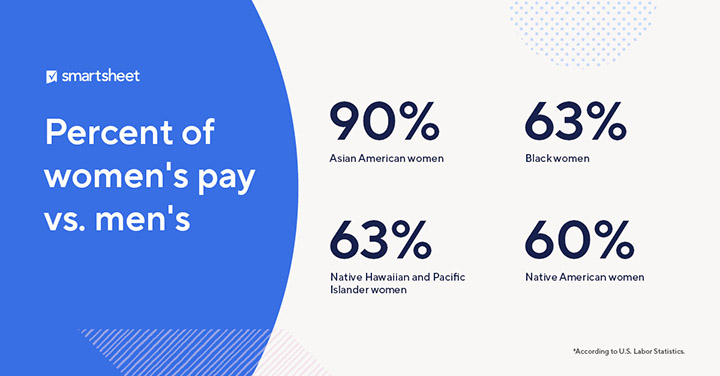Women in Project Management
A five-part series exploring gender diversity in the workplace.
By Linda Henry
Women in Project Management
A five-part series exploring gender diversity in the workplace.
By Linda Henry
Part 2
We've come a long way baby, or have we?
There are things people say to you that you never forget. They shape you in unpredictable ways, sometimes inspiring you to transcend limitations and explore new possibilities. I’m certain my high school typing teacher thought she was being encouraging when, responding to my exceptional shorthand skills and consistent typing scores of between 105 and 110 words per minute with no errors, she exclaimed in front of the class, “You are going to have a great career as an executive secretary!”
In my heart I wanted to be a journalist – or a genetic engineer. I opted for a major in journalism because the field for women in Science, Technology, Engineering, and Math (STEM) at that time was pretty narrow. And, to be honest, my senior Calculus class had crushed my desire to take college math.
To kick off Women’s History Month this past March, Smartsheet held a panel discussion featuring female senior leaders. Ronit Bohrer Hillel, VP of Engineering, had this to say:
Women engineers don't get associated socially with the men engineers, so the men don't think of them when it comes to hiring. We (women) need to bring our counterparts to that game.
A look back at women in STEM careers
Until this past century, if a female in the United States wanted a higher education, their choice was limited to attending a seminary. When women’s pursuit of a college education became more common, science and technology degrees were viewed as the domain of men. It wasn’t until 1980 that the percentage of women acquiring a bachelor’s degree reached 49%. This puts the context of women’s lack of representation in STEM careers until Gen Xers entered universities into context. Now we have schools, as well as organizations such as the National Science Foundation, that sponsor special programs to encourage young women to work in the sciences.
The enactment of Title IX in 1972 guaranteed the right to education free from sex discrimination, however it wasn’t until 1974 (after my typing teacher’s comment) that The Women's Rights to Equal Educational Opportunities act was signed into law in the United States. By then, there were female scientists at work in a variety of fields, most notably at NASA whose privately funded Women in Space program, Mercury 13, was an effort to recruit and train women astronauts in the early 1960s. A decade earlier, NASA hired hundreds of female mathematicians – or “human computers” – that helped launch the space program. Eighty of these women were Black and their story was celebrated in the 2016 film "Hidden Figures" based on the book by Margot Lee Shetterly with the same name.
But still the most common career choices for women during the 1940s - 1980s besides motherhood, included being a secretary, teacher, bookkeeper, waitress, or nurse.
From the 1990s until the present, the number of women in STEM-related fields has increased. Yet by 2019, the percentage of women in STEM careers was only 27%, while the percent of women in the workforce had reached 48%.
The current state
One STEM career that has seen a notable growth for women in recent years is that of a project manager, especially in technology companies. The Project Management Institute (PMI) reports that an estimated 20 – 30% of project management staff worldwide are made up of women. Many began their career as a technical expert then migrated over time into the role of project manager. While research suggests that diversity, including gender balance in project management produces better project results, the obstacle of a lack of female role models for women in these fields persists.
Project management work is lucrative for women – but not as lucrative as for their male colleagues. An international comparison shows the following gender pay gaps:
The good news, overall women project managers earn 92% of what men earn, which is ten percent higher than the current pay gap across all professions. However, as in other professions, the gap is wider for Black and Hispanic women.
The issue of pay equity continues to have repercussions for women across the workforce. My first job out of college was as a development professional with the Business and Professional Women’s Foundation (BPW) in Washington, DC. In 1984 our priority initiative was working with lobbyists on Capitol Hill to achieve equal pay for women in the workforce. At the time women were making 63.7% the rate of men. The wage gap has narrowed by less than half a cent per year since then and as of the beginning of 2022, women are now earning 82¢ for every dollar men earn. This average across all women doesn’t take into account the varying disparity for women of color. As you can see from the graphic below, some segments of our population have still not closed the gap to the percentage average across all women when I was writing grant proposals almost 40 years ago for BPW.
Where do we go from here?
More women in project management roles brings a different dimension to the way projects are handled. According to Statistical data from the PRINCE2® (PRoject IN Controlled Environment) women tend to be better communicators which leads to quicker handling of problems as they arise. Men are more likely to take risks and tend to motivate through competition that encourages success. A balance between the leadership strengths of each gender is important for the greatest innovation and project results.
Mary Bermel, senior director of marketing operations at Smartsheet, has this perspective. “Work is essentially and increasingly, all about projects. It's a project economy, so to speak whereby work is defined as projects with the goal of delivering a result. At its core, project management is people-centric. It is about people coming together to define, plan, execute, track, and measure work and the PMs role is to orchestrate the activity through thoughtful, organized, and detailed planning and implementation.”
When thinking about the future and what the female mindset brings to the table in the PM function, she goes on to say, “I believe women are particularly adept at project management work because we are used to being the multi-taskers, jugglers of multiple balls in the air at once, and because the female tendency to be nurturing and caring is critical to effectively working with people. Many men I’ve worked with are wired the same way, but these traits tend to be more female-centric. I have found that diversity in project management, including gender balance, produces better results.”
As of April 2022, of the 1,833 project managers employed in the United States only 38% are women. While this is an eight percent increase in the past eight years, if the growth pace remains the same, we won’t reach a 50/50 parity until the year 2034. Is this good enough? What can we do to hasten the increase of women in project management while also closing the gender pay gap? We’ll explore these topics in part three of this series coming next, “The new leadership mindset.”





